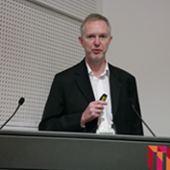Agenda
Timings are in CEST
- Session 1 - The Future of Fluoropolymers Beyond the Proposed EU PFAS Restriction
-
Welcome and introduction
- Authority Perspectives
-
Keynote How does the EU PFAS restriction contribute to the Chemicals Strategy for Sustainability ambition and how can fluoropolymers be considered in that context?
-
Overview of progress of the PFAS restriction proposal under REACH and next steps
- Progress made so far
- Studies on several uses
- Next steps, especially next consultation round (mid July till mid September)
-
Information needs for a targeted PFAS restriction
- What we know
- Data gaps
- Other helpful information
- No data, no market?
-
Q&A and panel discussion
-
Break and networking
- Exposure and Life Cycle Issues of Fluoropolymers
-
Fluoropolymer applications in the context of the EU Green Deal
- Fluoropolymers have unique physico-chemical properties and should be distinguished from other PFASs
- Fluoropolymers are irreplaceable and critical for enabling the EU Green Deal and the competitiveness of EU industry
 Ronald Bock
Senior Advocacy and Regulatory Manager, AGC Chemicals Europe / Chair of the Fluoropolymer Group, PlasticsEurope
Ronald Bock
Senior Advocacy and Regulatory Manager, AGC Chemicals Europe / Chair of the Fluoropolymer Group, PlasticsEurope -
Case Study: The importance of fluoropolymers across the hydrogen value chain
- Contribution of hydrogen technologies to the Green Deal
- PFAS use in hydrogen technologies: the case of PEM electrolysers and fuel cells
- Role of research for use reduction and potential alternatives
- End-of-life considerations
-
Case Study: The road to PFAS-free footwear
- Detox journey – a class approach and restricted substances list (RSL) best practices
- North Star of this journey – safe, effective, affordable and avoiding ‘regrettable substitutions’
- Ubiquitous – why in all these places?
- Step-by-step guide
- Challenges
- Conclusion
-
Are fluoropolymers really of low concern for human and environmental health, and separate from other PFASs?
- The history of pollution from fluoropolymer production is closely tied to use of PFASs as polymer processing aids
- Monomer, oligomer and synthesis byproduct are emitted during the production of fluoropolymers
- Fluoropolymers are persistent, and there are major questions around the disposal of fluoropolymers
-
Overview of key legal issues in connection with the proposed PFAS restriction as it applies to PTFE
- Review of the proposed restriction for PFASs under REACH as it applies to PTFE
- Analysis of the grouping approach held by the proposed PFAS restriction with regards to the restriction’s conditions set forth by REACH (effectiveness, practicability and monitorability)
- Review of the proposed PFAS restriction as it applies to PTFE with regards to the fundamental legal principles of the EU (proportionality, subsidiarity)
-
Q&A
-
Short break
-
Session 1 panel discussion
- Given that fluoropolymer exposures vary widely, how should we be thinking about exposure?
- What is driving the presence of highly stable chemistries in products with different life cycles?
 Ronald Bock
Senior Advocacy and Regulatory Manager, AGC Chemicals Europe / Chair of the Fluoropolymer Group, PlasticsEurope
Ronald Bock
Senior Advocacy and Regulatory Manager, AGC Chemicals Europe / Chair of the Fluoropolymer Group, PlasticsEurope -
Networking, break and Chemical Watch live demo 14.05–14.50
- Session 2 - PFAS Alternatives
-
Alternatives case study 1
Switching to fluorine-free water repellent solutions in textile applications: Selected case studies highlighting feasibility, obstacles and limitations in switching from C6-fluorocarbon based solutions to PFAS-free.
- Chemical background and how water repellency works (elementary level)
- Performance differences and limitations of C6 and PFAS-free textile applications
- The main challenges in moving to PFAS-free
-
Alternatives case study 2
PFAS-free cook and bakeware
The Cookware Company has been offering a PFAS-free choice of non-stick cookware to the consumer since 2007. They will expand on how they brought their ceramic coating technology to fruition as a viable, affordable alternative to replace various other uses of PTFE.
-
Panel discussion: PFAS alternatives
- Alternatives are already on the market, but are they effective? What is in them? How can we avoid regrettable substitution because of lack of data?
- Is there truly an ‘alternative’ for the carbon-fluorine bond, which is powerful and unique? Beyond what is already on the market, how do we encourage innovation? Is there a viable pathway via ‘safe and sustainable by design’? Are the commercial incentives sufficient? Are there lessons to be learned from other sectors that invest heavily in R&D? Are rules about protection of intellectual property rights working well in this context?
Moderator: Andrew Turley, Science Editor, Chemical Watch
-
Short break
- Session 3 - Updates from the US
-
Moderator:
-
Overview of PFASs in the US: Uses and history
 Robert J. Simon
Vice President, Chemical Products & Technology Divisions, American Chemistry Council
Robert J. Simon
Vice President, Chemical Products & Technology Divisions, American Chemistry Council -
Q&A
-
Chemical identity and the EPA process for approving new PFAS chemicals
-
Q&A
-
Regulating PFASs as a class – a panel session
Panellists:
 Dr Anna Reade
Staff Scientist, Healthy People & Thriving Communities Program, Natural Resources Defense Council, USA
Dr Anna Reade
Staff Scientist, Healthy People & Thriving Communities Program, Natural Resources Defense Council, USA -
Q&A
-
Short break
-
An overview of all pending or anticipated US federal regulations
-
The Proposed TSCA (8) PFAS Reporting Rule
-
Q&A
-
EPA-regulated products and PFASs including the recent pesticides and PFAS issue
 Jeffrey L Dawson
Senior Science Adviser, Office of Chemical Safety and Pollution Prevention (OCSPP), US EPA
Jeffrey L Dawson
Senior Science Adviser, Office of Chemical Safety and Pollution Prevention (OCSPP), US EPA -
Food contact materials regulations and PFASs
-
Q&A
-
State level actions – a panel session
 Karl Palmer
Chief, Safer Consumer Products Branch, California Department of Toxic Substances Control
Karl Palmer
Chief, Safer Consumer Products Branch, California Department of Toxic Substances Control -
Q&A
-
Close of conference




_opt-(1).jpg)


_opt.png)











